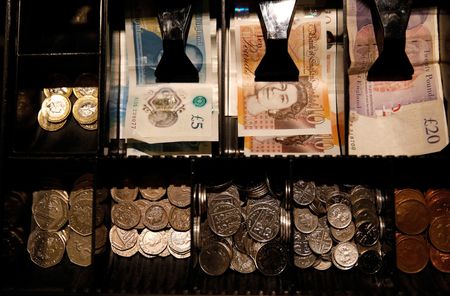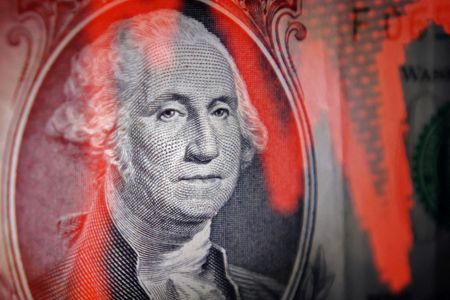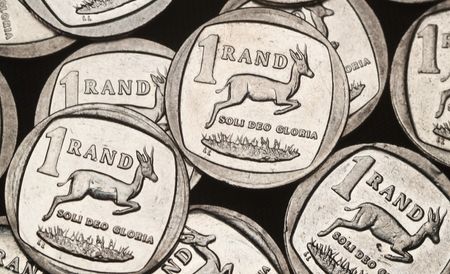By Linda Pasquini and Kevin Buckland
TOKYO/GDANSK (Reuters) -The pound strengthened on Thursday after the Bank of England cut its main interest rate by 0.25 percentage points to 4.25%, with an unexpected three-way split among policymakers, including two who voted to keep rates unchanged.
At 1114 GMT, sterling had gained 0.24% on the U.S. dollar to $1.33215 and 0.9% against the yen at 192.80, while the euro extended its losses on the pound to trade down 0.3% at 84.78 pence.
It had previously been relatively flat against the dollar after U.S. President Donald Trump said the United States and Britain will announce a deal to lower tariffs on some goods later in the day.
“There’s certainly been some surprise with a couple of votes for rates unchanged,” said Dominic Bunning, head of G10 FX strategy at Nomura, adding that sterling’s slightly positive reaction is to a higher bar to cutting rates faster for now.
The BoE’s Monetary Policy Committee voted 5-4 in favour of the decision to cut rates by a quarter point. Two members, Swati Dhingra and Alan Taylor, voted for a bigger half-point cut while Chief Economist Huw Pill and external member Catherine Mann wanted to keep interest rates on hold.
“The report doesn’t change a huge amount in the long term, but it’s understandable sterling has had a little bit of a bounceback on what seems to be modestly hawkish bias on the initial read of things,” Bunning said.
Markets now price in 59 basis points of BoE rate cuts by the end of the year.
Elsewhere, the dollar held gains against a basket of other currencies.
It rose by about half a percentage point to 144.68 yen and by a modest 0.2% to 0.8250 Swiss francs, extending gains made the previous day after the Federal Reserve affirmed its wait-and-see approach and helped by Trump’s deal announcement.
Posting on his Truth Social platform, Trump said he would hold a press conference at 1400 GMT about a “full and comprehensive” trade agreement with Britain, revealing the identity of the country it had withheld in an earlier statement and confirming a New York Times report.
The euro was flat at $1.13, following a 0.56% decline on Wednesday that was its biggest in two weeks.
The U.S. dollar index, which measures the greenback against six major peers, edged up 0.2% to 100.05.
Last week, Trump said he had “potential” trade deals with India, South Korea and Japan.
“The market is running with the idea that any trade deal is good news, because it provides a certain degree of clarity and could provide a template for others to follow,” said Rodrigo Catril, senior FX strategist at National Australia Bank.
At the same time, a British trade deal is considered among the easier negotiations, while talks with Europe and particularly China are expected to be more complicated, he said ahead of details on the deal.
“The devil will be in the details,” Catril said. “These deals are not going to come for free.”
Investors will watch closely for any signs of thaw when U.S. Treasury Secretary Scott Bessent and chief trade negotiator Jamieson Greer meet China’s economic tsar, He Lifeng, on Saturday in Switzerland.
Trump suggested on Wednesday that Beijing initiated the talks, and said he was not willing to cut tariffs on Chinese goods to nurture negotiations.
The dollar edged up 0.12% to 7.2381 Chinese yuan in offshore trading.
It started Thursday on the front foot, a day after the Federal Open Market Committee (FOMC) warned of rising risks to the economy from higher inflation and unemployment, but left interest rates unchanged, as widely expected.
Markets currently price three quarter-point rate cuts by year-end, with the next coming in July or September.
Elsewhere, the Swedish and Norwegian crown were trading at 9.662 and 10.3576 per dollar, respectively, little changed after Sweden’s Riksbank and Norway’s Norges Bank held their rates as expected.
(Reporting by Kevin Buckland, Linda Pasquini and Samuel Indyk; Editing by Sam Holmes, Emelia Sithole-Matarise and David Evans)










